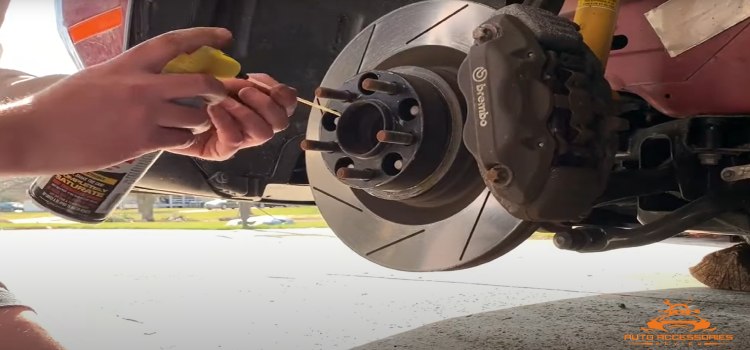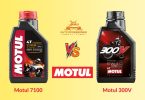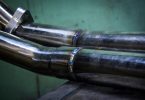Fasteners are commonly coated with anti-seize grease or compounds to prevent the threads from galvanizing, especially when the metals are dissimilar. Suppose you live in an environment where corrosion is a problem. In that case, anti-seize is essential to protect the threads from corrosion and contamination.
There are threadlockers and silicone adhesives applied to bolts or other threaded items before screwing them in place to prevent them from coming loose. Bolts or fasteners should be glued down with thread locking adhesives if they are going to be exposed to a lot of vibration or movement. Loose bolts could cause machinery to fail, resulting in an accident.
What Does Anti-seize Do?

It is important to use anti-seize when using dissimilar metals such as steel bolts in aluminum brake calipers. Threads are corroded by corrosive elements like suspension fasteners,
Also, where high-temperature corrosion may occur, such as turbo, exhaust, manifold fasteners, and where fasteners are often removed.
Under all of these circumstances, anti-seize should only be applied to the thread of a fastener as well as any tapped holes it threads into. There is a risk of contaminant buildup and damage when anti-seize is applied to exposed threads of the fastener.
Anti-seize
Pro
- Protects from corrosion and rust
- Reduces friction
- Non-dripping and non-hardening
- Speeds up assembly
- Can be used in a wide range of application
Cons
- Some systems may experience corrosion, especially when stainless steel and galvanized fasteners are used
- Influences torque
- Not appropriate for fast-moving uses
- Low temperatures are not suitable for this product
What does Threadlocker do?

Threadlockers are adhesives that lock nuts, bolts, and screws firmly in place and prevent them from becoming loose. They are a better alternative to mechanical fasteners. A chemical cure is achieved anaerobically by forming a bond between threads, preventing them from moving.
They are available in many variations, each with its own curing time, strength level, and temperature range.
Threadlocker
Pros
- Vibration resistance improved
- Shock impact reduced
- Anticorrosion and antileakage seals
- Thermal stress resilience enhanced
- Inventory costs reduced
Cons
- Doesn’t cure sitting in the open air
- The threadlocker cures only after the fasteners are assembled
- Not recommended for use in cold temperatures
- Clean and dry threads are essential
Anti-Seize vs Threadlocker: How Do They Differ?
1. Appearance
Anti-seize
It contains copper, aluminum, and graphite, and is silver in color.
Threadlocker
Available in multiple brands, in multiple grades using a standardized color-coding system. The most common are: Purple (light strength), Blue (moderate strength), Red (strong strength), and Green (penetrating low-high intensity)
Winner
Thread lockers come in different colors, all of which are different strengths.
2. Function
Anti-seize
Applied on fasteners, bolts, and flanges to prevent corrosion, galling, and seizing. It also works for lubrication during disassembly and is found in marine, food, and automotive applications.
Threadlocker
A nut, bolt, and screw adhesive designed to prevent loosening due to stress or vibration
Winner
Anti-seize has more functions than the threadlocker. Threadlocker is more of a glue with limited use.
3. Additives
Anti-seize
Anti-stick compounds often have additives like nickel, copper, and molybdenum as slip agents.
Threadlocker
Typically composed of a methacrylate-based fluid which is polymerized by a metal substrate electrochemically.
Winner
Both of these compounds have additives added.
4. Durability
Anti-seize
Pastes and lubricants containing copper can withstand temperatures upwards of 1800°F.
Threadlocker
Products can withstand temperatures between -65°F and 300°F, with some threadlockers capable of withstanding temperatures as high as 650°F.
Winner
Anti-seize products can withstand higher temperatures than the threadlocker can.
5. Strength
Anti-seize
It can resist extreme temperatures and minimize seizures and galling even under the most stressful conditions. As a result of its high solid content, anti-seize is capable of handling high loads while still lubricating and reducing friction.
Threadlocker
Shear Strength is rated at 21 MPa (3,000 psi) for permanent threadlockers. In some cases, loosening a permanently thread locked fastener may require more torque than the fastener can handle,
Winner
Threadlockers have more strength than the anti-seize and are able to handle more load.
6. Price range
Anti-seize
Starts at $20 for the budget range.
Thrdeeadlocker
You are looking at around $15 for the starting range.
Winner
The threadlocker is the cheaper of the two.
Anti-seize vs Threadlocker: When to Use What?
The use of anti-seize is important in the assembly line and maintenance and repair work since it helps prevent corrosion, galling, and slipping when bolts and fittings are disassembled or reassembled.
In addition, anti-seize is recommended when metals and plastics are involved, corroded threads may develop, and fasteners are frequently removed.
On the other hand, a threadlocker solution prevents fastener assemblies from accidentally coming off due to vibration. Although not always necessary, threadlcoker is also useful when installing nuts and bolts.
FAQs
1. Can you use anti-seize as a Threadlocker?
Ans. No, a threadlocker makes things harder to move, and anti-seize works to loosen them.
2. Where should you not use anti-seize?
Ans. Any other mechanical assembly that requires lubrication, such as caliper slide pins, bushing press threads, etc. Anti-seize should never be applied to exposed threads as it may lead to contamination during removal, resulting in thread damage.
3. Is the anti-seize flammable?
Ans. Flammable to the point of being explosive. Remove the empty container and all parts of the product from heat and ignition sources. When the vapors return to the source of ignition, they can cause fire.
4. Is it okay to put anti-seize on spark plugs?
Ans. An engine can suffer severe damage if the metal shell of a spark plug is stretched and causes pre-ignition. Spark plugs should not be lubricated or treated with anti-seize. It is both unnecessary and harmful.










Leave a Comment